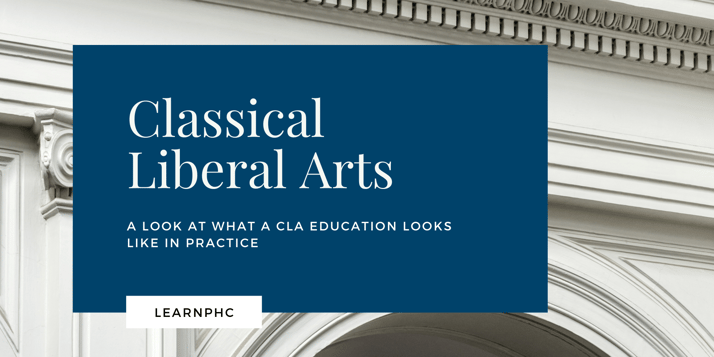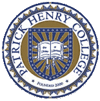
PHC defines itself as an academically rigorous, Christ-centered, Classical Liberal Arts college. The professors test their students' limits, pushing them to do their very best. The entire curriculum is built around Biblical truths and designed to encourage students to grow in their faith.
Rigorous and Christ-centered are not confusing terms, but what does it mean to be Classical Liberal Arts (CLA)? To graduate, students must take 63 credits of CLA core classes, 12 credits of a foreign language, and their major courses. The CLA education is clearly very important to PHC, but what does it mean?
The PHC core embraces all seven of the classic liberal arts: grammar, logic, rhetoric, mathematics, geometry, music, and science (with biology and physics taking the place of the ancient “astronomy”).
Grammar and rhetoric are exercised specifically in the Recitation course, which instructs students in speaking and writing. Students take a Logic class early in their academic careers. Geometry and Music Appreciation are also staples of the core curriculum. Students gain mathematics skills from the Physics course. In addition, PHC requires two courses in the history of the United States, and two courses in the history of Western Civilization, two Western Literature courses, two courses in the theology of the
Bible, Principles of Biblical reasoning, philosophy, Constitutional Law, economics, and two courses in Freedom’s Foundations.
"The classical liberal arts, of course, is not just a sequence of courses but a conceptual framework and a methodology," says the PHC Philosophy of Education. "The liberal arts stress content, the imitation of excellence, the pursuit of knowledge that is
valuable in itself, and the exercise of the whole range of talents that God has given. The liberal arts curriculum is broad in scope, but its parts are integrated with each other, as students explore the connectedness of all the disciplines."
Learning the basics of the field (grammar), in depth discussions (logic), and writing projects (rhetoric) characterize every class. In fact the three-part structure of the curriculum also reflects the classical liberal arts. The core, where students learn basic knowledge from a number of fields, corresponds to grammar. The majors, in which students arrive at greater understanding, as they study a field in depth, corresponds
to logic. The apprenticeship requirement, in which students creatively apply their knowledge and understanding in a real-world context, corresponds to rhetoric. Thus, a Patrick Henry College education is unusually comprehensive, rich, and effective.
To read more about the CLA core and what students have accomplished after graduating, read Facts About PHC here.
-----
Learn how PHC stands apart from other Christian liberal arts programs.
Patrick Henry College exists to glorify God by challenging the status quo in higher education, lifting high both faith and reason within a rigorous academic environment; thereby preserving for posterity the ideals behind the "noble experiment in ordered liberty" that is the foundation of America.




